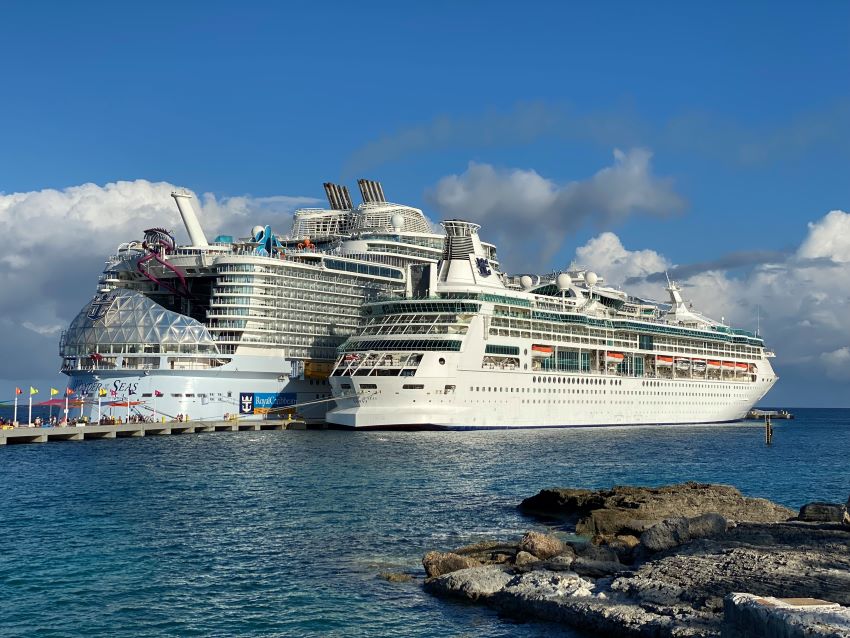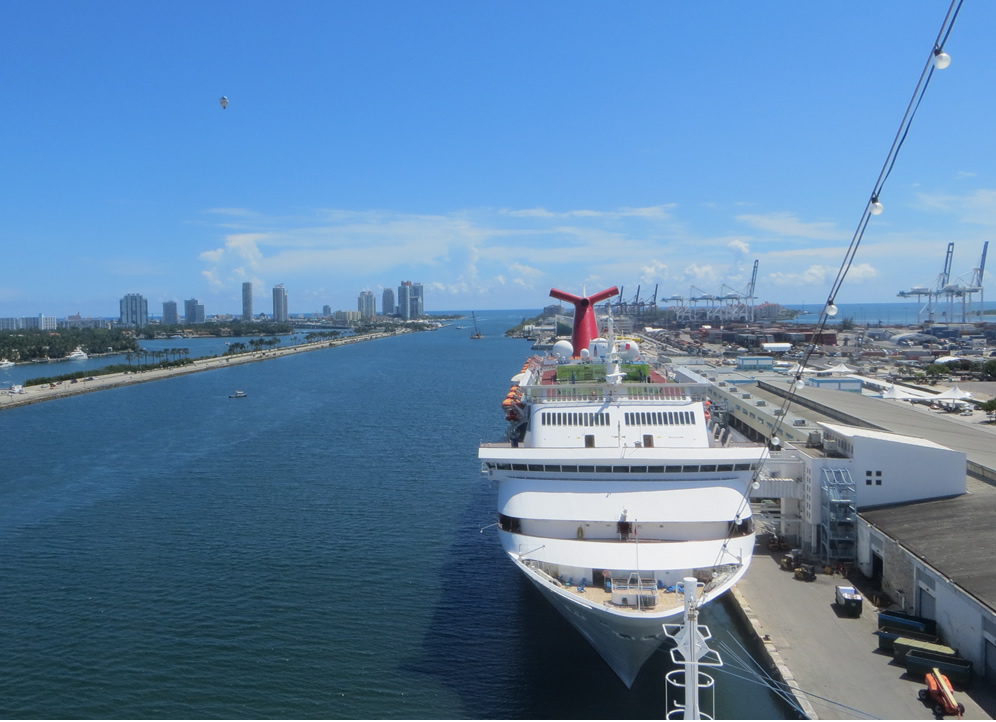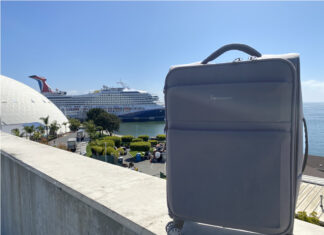How much larger have cruise ships become? Until you are standing next to a modern cruise ship, it’s hard to appreciate just how massive they actually are.

Many times they are called floating cities. That’s not just a cute phrase. It’s accurate. The largest cruise ship in the world — Royal Caribbean’s Icon of the Seas — can hold more than 7,000 passengers and 2,300 crew. That’s nearly 10,000 people.
Meanwhile, the amenities onboard include everything you need to run a city of that size, from more than 20 places to get a bite to eat to medical facilities, from laundry facilities to storefronts.
Growing in Size Over the Years
Gone are the days where a cruise ship was designed simply to be the vessel to get you from port to port. Today, the cruise ship is the destination.
For years there’s been an arms race when it comes to ships. The major cruise lines — including Carnival, Royal Caribbean, and Norwegian — have competed to create ships that not only push their own fleets bigger, but also put them on par with their rivals.
That’s led to the largest cruise ships the world has ever seen and a steady increase in average size over time.
Consider that from 1990 until 2000, most cruise new ships built were in the 70,000-80,000 gross ton range. (Gross tonnage is a standard measure of a ship’s size.) The average size of all new ships during this time from the major cruise lines was 80,000 gross tons.
But since then the size of ships has soared.
From 2015 until today, the average gross tonnage of a new cruise ship from the major cruise lines is 170,435 gross tons — more than twice the size of a ship built during the 1990s. That includes the Icon of the Seas, which comes in at a staggering 250,800 gross tons.
Take a look at just how dramatic the increase in cruise ship size has been during the past decades:
As you can see from the chart, when it comes to size, all the cruise lines continue to move toward larger ships. Every single cruise line has dramatically increased in size over the past several decades.
However, Royal Caribbean is the line that pushes the envelope the most when it comes to building bigger ships.
The line of ships at the top of the chart represent the cruise line's Oasis class of ships and then its Icon class, which are now the biggest in the world. Oasis first launched in 2009, and the ship within this class are all at least 225,000 gross tons. Icon class debuted in 2024 with Icon of the Seas, which is roughly 250,000 gross tons.
That's about three times the size of the average ship built in the 1990s.
Why Cruise Ships Continue to Get Bigger
So why do cruise ships continue to get larger? For cruise companies and passengers, there are a number of benefits to larger cruise ships.
For passengers, larger ships simply mean more options. With more space comes more restaurants, public areas, activities, and cabin types.
Consider Carnival's Jubilee. The new mega-liner debuted at the end of 2023, and will have more than 20 spots to eat on board. That's a long way from just having a buffet, dining room and maybe another restaurant or two like you would have found on much older cruise ships.
Norwegian's Breakaway-Plus class of ships like Norwegian Encore have the space to include a number of activities that were unheard of just a few years ago. This includes laser-tag arenas, virtual reality areas, and even go-kart tracks at sea.
For cruise lines, larger ships bring economies of scale come into play. Put simply, it's much cheaper for a cruise line to build and operate one 6,000 person cruise ship than two ships with 3,000 people sailing. It requires less staff, and less cost to build a single large ship than two smaller ones.
With more space, there are also more chances to earn money from passengers. As mentioned by Travel Weekly, "large ships have far greater potential for onboard revenue than smaller ones, with more space for bars, restaurants, and bigger casinos and spas."
Finally, cruise ships act as a marketing tool for the cruise line.
With each new ship comes new media coverage and attention to the ship and the line. In the race to gather attention, bigger and more extravagant lead the way to gather the imagination of potential passengers. There's a very good reason that you never see older ships in the advertisements from the cruise lines.
Limits on Cruise Ship Size

Given the current trend, you might think that cruise ships will continue to increase in size in the future. That's likely not the case. There does come a point to where size becomes a negative instead of a benefit.
Consider that the Oasis of the Seas -- the first of the largest Oasis-class vessels built by Royal Caribbean -- was built in 2009, more than a decade ago. Since then, it's had several sister ships built, that have been marginally larger at most. Icon of the Sea is larger on a tonnage basis, but only by about 6%
Instead, at least for now, this seems to be the upper limit for how large cruise ships will become. As ships get larger, so too do the logistical issues that come with them. Namely, not every port of call can handle the size and scale of the largest vessels.
For example, the Port of Tampa Bay simply can't have the largest cruise ships dock because the height of the Sunshine Skyway Bridge at the entrance to the bay is too low.
The Port of Galveston (the busiest cruise port outside of Florida) now welcomes Oasis-class ships, but first had to work with Royal Caribbean to build an entirely new terminal that could accommodate ships of that size.
But while the limit on the size of ships may have maxed out for now, there is still room for more vessels to be built up to current standards. Of the cruise ships included on our chart above, about a third of them are less than 100,000 gross tons.
For those that enjoy the older and smaller ships, the trend is definitely not in your favor.






